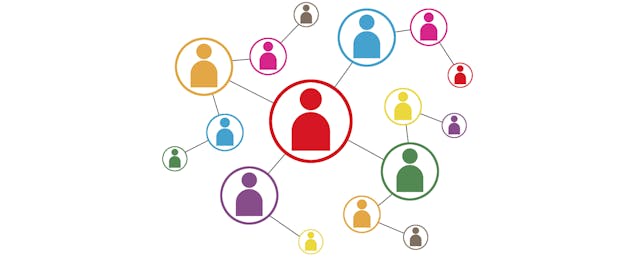Even before the world got turned upside down and we closed our schools, most people knew that K-12 education was in need of innovative ideas, practices and tools. No one would have wished for a global pandemic to destabilize our education system, but alas, here we are. Now, we face the daunting task of overhauling educational experiences to help our students thrive and grow.
We're all striving to get back to at least some version of in-person learning. While it is absolutely essential to protect the health of teachers and students, keeping children out of school can have long-term repercussions on their education. A recent study by researchers at Tulane University found that it took two school years for returning students to recover the learning lost to Hurricane Katrina. The impact was even worse for low income and African American students.
I've spent over 20 years designing user experiences for tech companies, parents, schools and children. Watching how teachers and students work and interact with the world around them, I've learned to create experiences that help them achieve their goals. In recent months, I've focused on bridging the gap between in-person and distance learning.
Reflecting on my own experience and seeking out teachers who are combining analog and digital tools to succeed, I've developed four tips to help educators shrink the divide between the worlds of in-person and distance learning.
1: Don't rely on technology alone to reach students.
Simply adding more computer technology into the instructional mix is not an effective means of connecting with students, especially during times of emergency school closures. Whether teaching remotely or in the classroom, consider making time—and providing the right types of hands-on tools—for collaboration, learning and growing.
Sarah Smith is a third grade teacher and curriculum developer in Denver Public Schools. During the pandemic, she has regularly turned to mcSquares reusable whiteboarding surfaces while remotely teaching her class of 25 students. She cites a recent example of teaching students how to draw and analyze scales for bar graphs.
"Many of the children were struggling to draw the graphs on their Chromebooks," Smith says. "On Google Meet, I was able to quickly sketch the graph on an mcSquares Surface and hold it up to the camera. My students could easily see what the correct solution was and emulate my graph at home. Be it with math or spelling, children often learn by identifying shapes and patterns—there's a reason that blackboards have been around all these years."

Digital interfaces are rarely as simple and intuitive as a marker and drawing surface. Students and teachers need access to a wide variety of communication tools.
2: Check in regularly with your students and their parents.
The pandemic has wholly destabilized the foundations of our education system. To respond to this challenge, we're going to have to fundamentally rethink classroom practices and technologies.
For instance, Smith uses Google Forms to gauge how students and parents are coping with the new normal of remote learning. She occasionally asks students to respond non-verbally. "Emojis are a fun and intuitive way for children to express what they are feeling," she says.
Jessica Cardenas is a K-2 art teacher at an independent school in Denver, Colorado. She uses online tools like SeeSaw, which allows students to express their knowledge and feelings while showing their thought process, not just their work.
"These times are new for teachers and students alike," says Cardenas. "We should be using every tool at our disposal—be it a learning platform, email, even setting up online office hours—to make sure we're continually getting feedback from students and parents."
This type of check-in can also take place in a non-digital way, through phone calls or socially-distanced, in-person meetings.
3: Design learning experiences for everyone.
Paying attention to the ways your students learn best is critical. In an interview published in The Clearing House, learning styles expert Rita Dunn notes that when the Front School District in New York adopted a program employing different approaches for distinct learning styles, the percentage of students who passed the local examinations increased from 25 percent to 66 percent in the first year.
As Sarah Smith observes, "It's important to make sure that you are inclusive. When I'm explaining a point to my class, I ensure that I sketch it out on a whiteboard for visual learners, say it aloud for auditory learners, and where applicable, I stand up and model whatever it is that I'm trying to do with my hands for kinesthetic learners."
4: Prioritize students’ emotions along with their safety.
Even when they reopen, schools can't go back to business as usual. They'll have to make changes to classrooms, buses and common areas. Keeping students six feet apart can involve cutting classroom capacity by as much as a third. Responsibly accommodating all students might necessitate staggered schedules or other unfamiliar disruptions to traditional practices.
However, we can't be cold and clinical while designing socially-distanced educational experiences. Children value connections and proximity. They need to have dynamic learning environments, where they feel free to express how they're handling uncertainty. They also need to know they are being heard by their teachers and peers.
No detail is too small. Developing new safety protocols is essential. Equally important are the ways you are communicating them. What are the fonts you are using? Are they legible from a distance? Can the letters be bold and large, yet friendly?
If the weather and the school campus allow it, Smith and Cardenas both recommend holding classes outdoors whenever possible. "There's no better way to be mindful and happy than connecting with nature," Smith says. "Setting up class in a tent or taking a walk allows students to connect with each other in a safe and enjoyable way."
We're all still striving to create the best solutions for teachers, parents and students to reimagine and rebuild classrooms—places where children recognize their potential and explore possibilities. Technology will certainly play a central role in this process. However, as we develop hybrid learning solutions, we must also help our children learn and collaborate in natural and organic ways.



